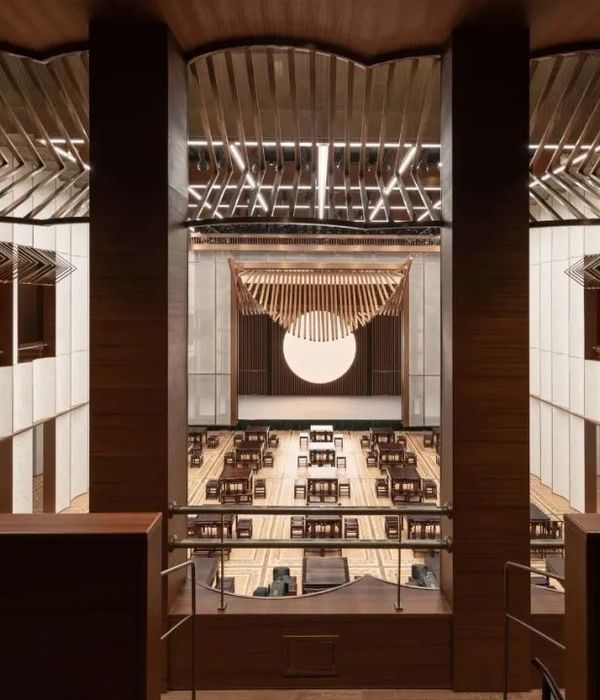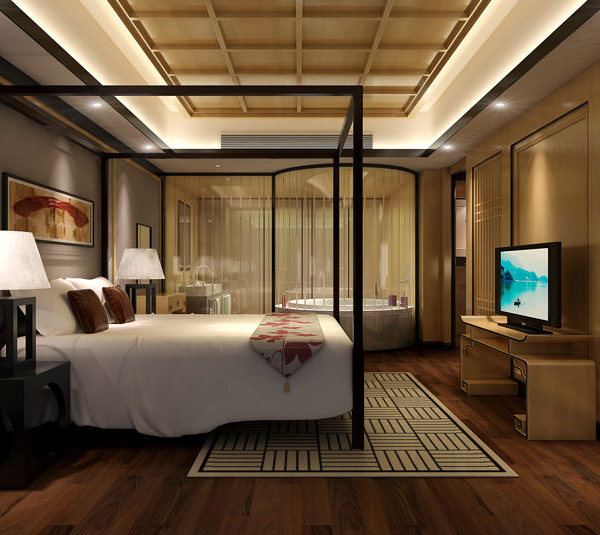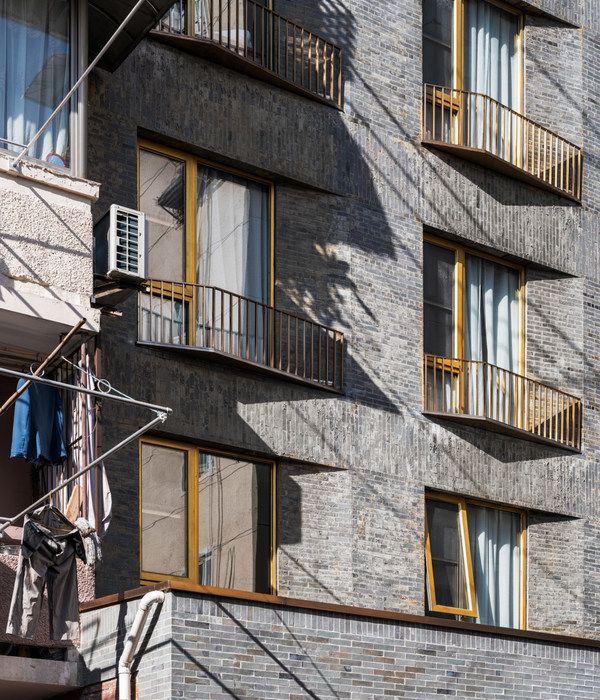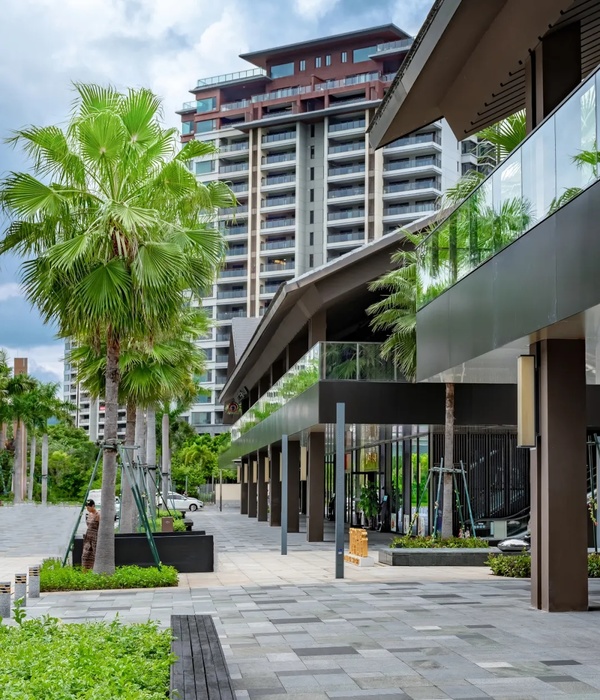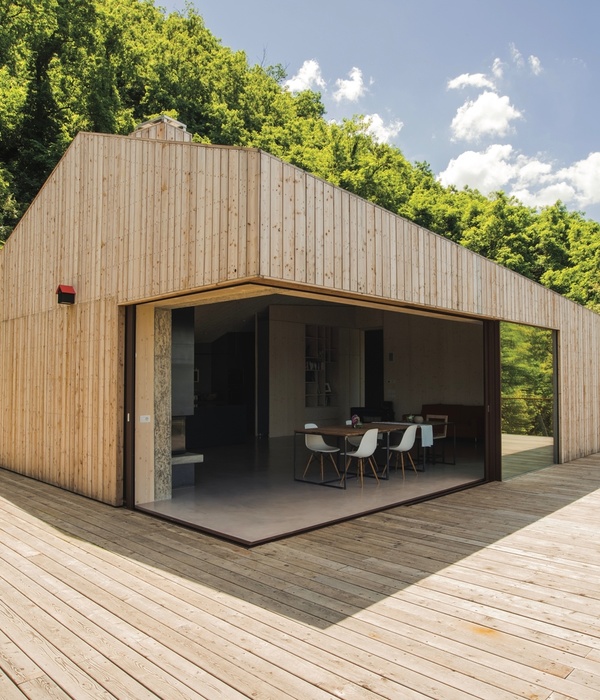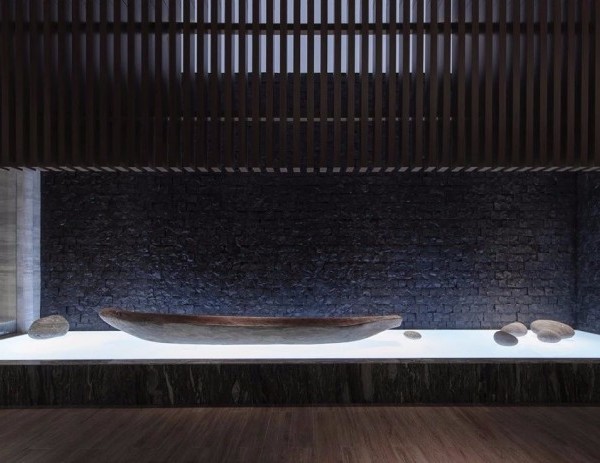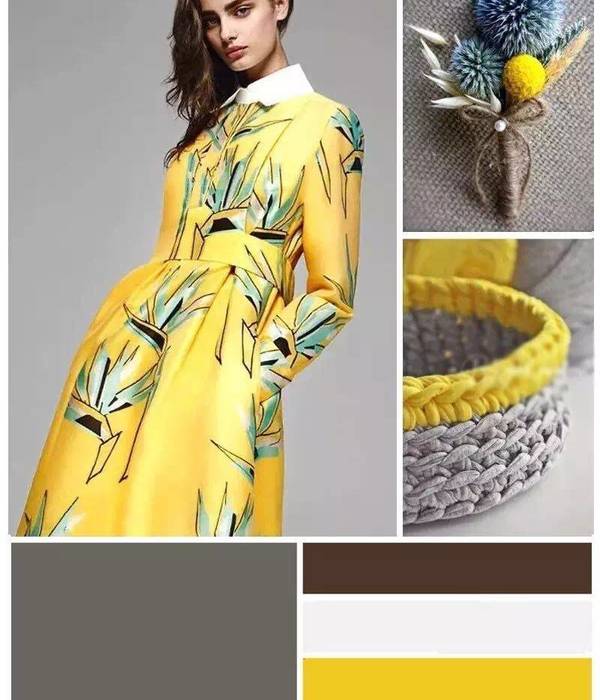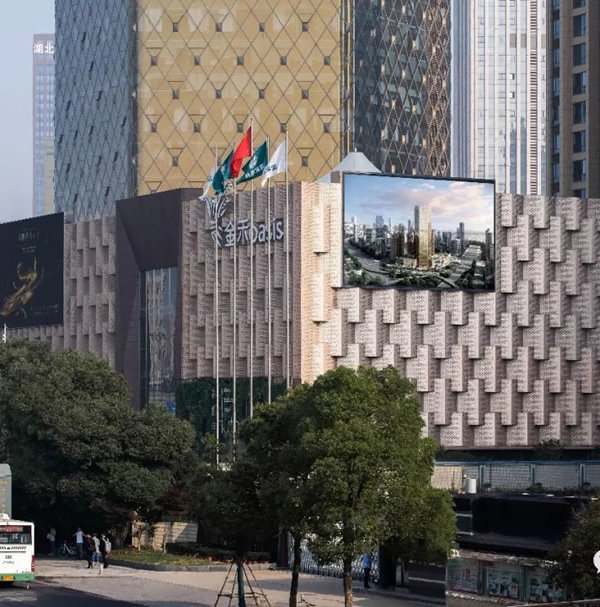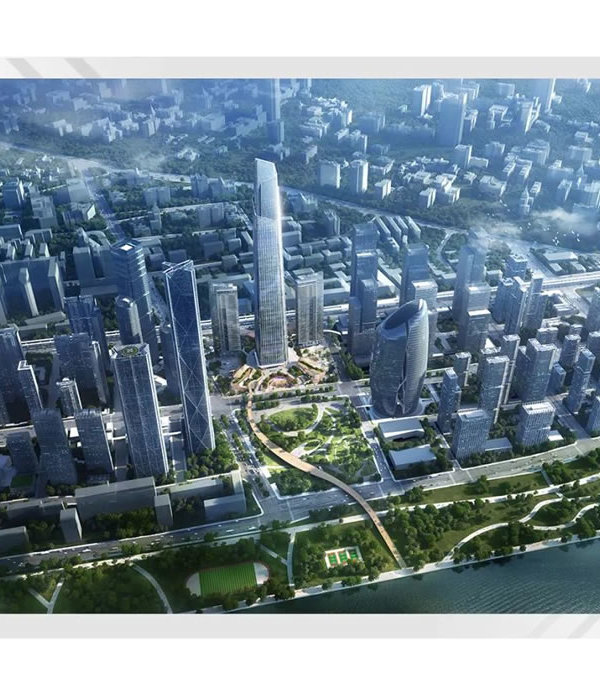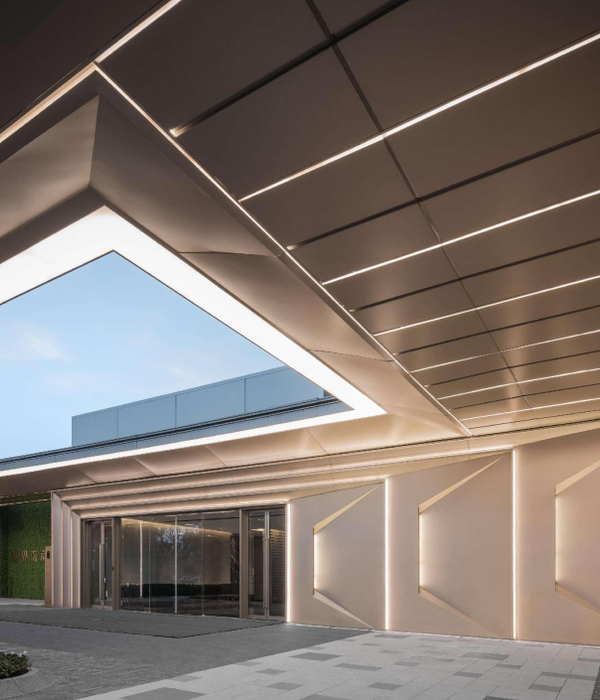陕康里 | 历史与创意的完美融合
- 项目名称:陕康里
- 设计方:COLORFULL 昱景设计
- 公司网站:http:,,www.colorfull-design.com,
- 联系邮箱:cf@colorfull-design.com
- 设计指导:赵宗阳,小野良介
- 建筑方案设计:川合丰,张颢,安部井乔
- 建筑深化设计:张颢
- 室内方案设计:孙秀云,张凡星,李立群,吴航,余林波
- 室内设计深化:李立群,庄宏玲,张凡星,吴航
- 景观设计:张颢,安部井乔
- 项目地址:上海市静安区康定路358号
- 建筑面积:12,000㎡
- 摄影版权:润土 | 邵钟瑞
- 客户:锦和集团
项目用地位于上海静安区陕西北路与康定路交汇处,交通十分便利。用地面积约12,000平方米,包括三座历史建筑、一个建材市场和数个商业小店铺。项目地处原租界一带,周围密布着梧桐行道树和红砖古建筑,充满海派风情(老上海风情)。
The project site is located at the intersection of North Shaanxi Road and Kangding Road in Jing’an District, Shanghai, with convenient transportation. The site covers an area of approximately 12,000 square meters, including three historic buildings, a building materials market and several small commercial stores. The site is located in the former concession area and is surrounded by paulownia trees and red brick buildings of old Shanghai style.
▼项目鸟瞰,aerial view of the project © 润土 | 邵钟瑞
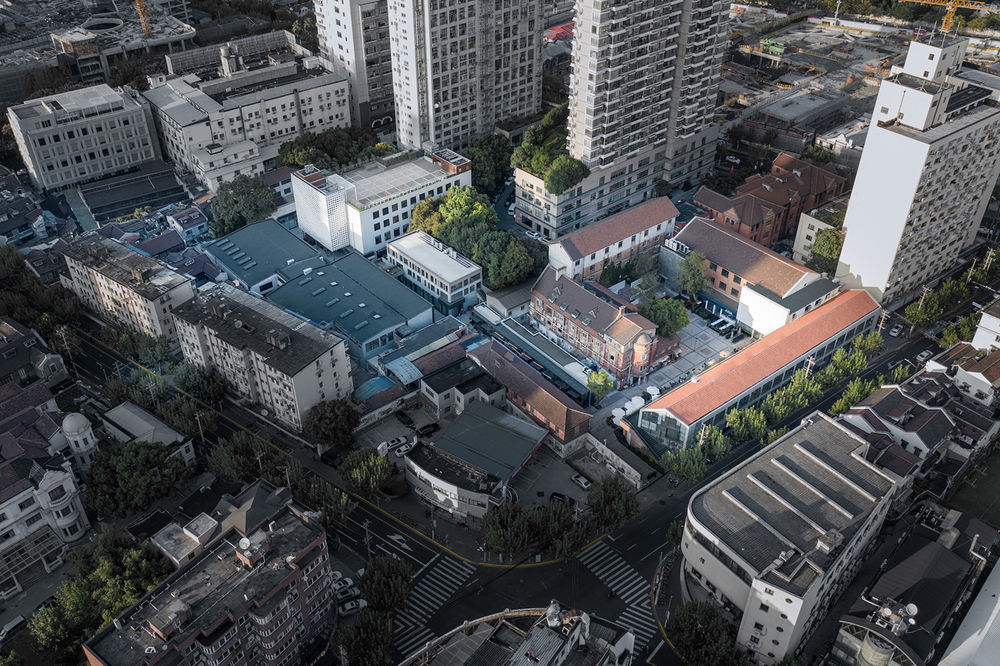
项目用地保留着租界时期的遗迹和原来的工业建筑,有着重要的历史价值。回溯历史,上海依据南京条约开港、租界开始形成后,到20世纪20年代末,上海这个国际都市迎来了发展史上第一个黄金时期。在当时,用地被英国作为殖民地,登上了历史舞台。用地内建起了西洋建筑风格的红砖警署、修理工厂、训练场、宿舍等。民国4年,为解决租界印度巡捕与巡捕房司阍之间的矛盾,这里修建了锡克教堂,专为印度巡捕礼拜用,即当时的戈登路锡克教谒师所,亦是上海规模最大的锡克教谒师所。1943年后,上海作为租界城市的历史结束了。英国从这片土地撤离,留下了这里的建筑物。过去美丽的教堂被随意改建,紧邻康定路的修理工厂则成了商业开发的对象,各种零售店入驻,杂乱的店面招牌遮盖了原本的建筑,租界时代的面貌消失无踪。
▼原貌,original view © COLORFULL 昱景设计

The project site has significant historical value as it retains remnants of the Concession period and the original industrial buildings. Looking back in history, after Shanghai opened its port under the Treaty of Nanking and the concessions were carved out, the first golden period in the history of Shanghai’s development as a cosmopolitan city came in the late 1920s. At that time, the site was colonized by the British and came to the forefront of history. Red brick police station, repair factory, training ground and dormitories in the Western architectural style were built on the site. In the 4th year of the Republic of China, to resolve the conflict between the Indian constables and the keepers of the constabulary, a Sikh Church was built on the site for the Indian constables to worship, which was then known as the Gordon Road Sikh Visitation Hall, and was the largest Sikh Visitation Hall in Shanghai. After 1943, Shanghai’s history as a rented city came to an end. The British withdrew from the land, leaving the buildings behind. The formerly beautiful church was converted at will and the repair factory adjacent to Kangding Road was transformed for commercial development, with a variety of retail outlets moving in and a clutter of shop signs obscuring the original buildings, the look of the Concession era disappeared.
▼近景鸟瞰,closer aerial view © 润土 | 邵钟瑞
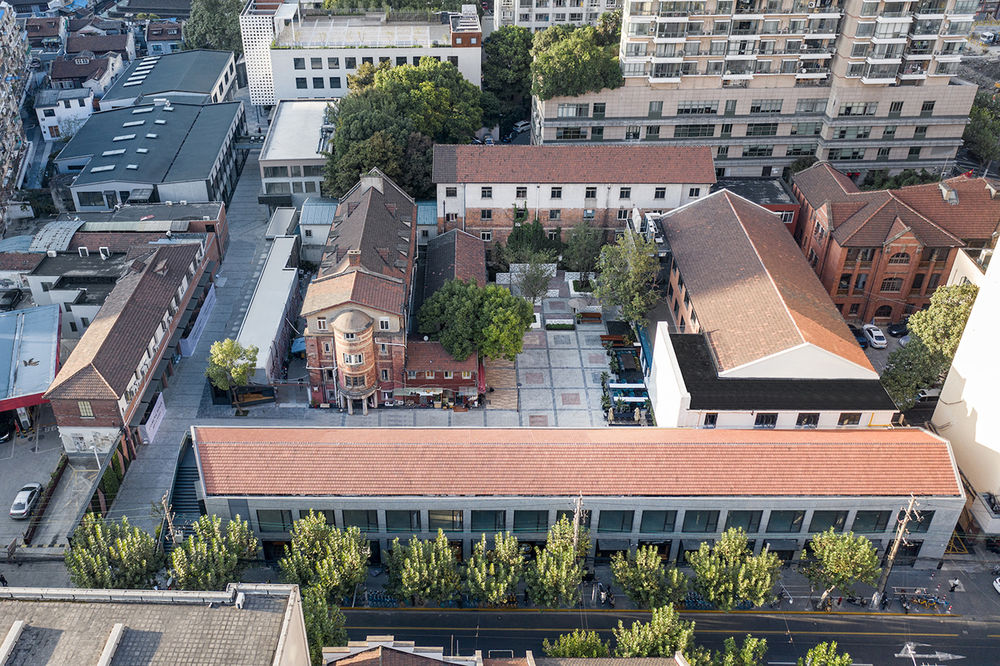
我们计划打造一个全新的创意产业园区,一方面要尽量保留用地的历史氛围,另一方面也能在此汇集多样的人群与多样的功能。通过我们的设计,既保留各个建筑本身的基本形状与历史风格,又凸显其各自的个性。
We plan to design a brand new creative industrial park that on the one hand preserves the historical atmosphere of the site as much as possible, but on the other hand brings together a diverse range of people and functions. Through our design, the basic shape and historical style of the buildings themselves are preserved, while at the same time their individualities are highlighted.
▼临街立面,facade to the street © 润土 | 邵钟瑞
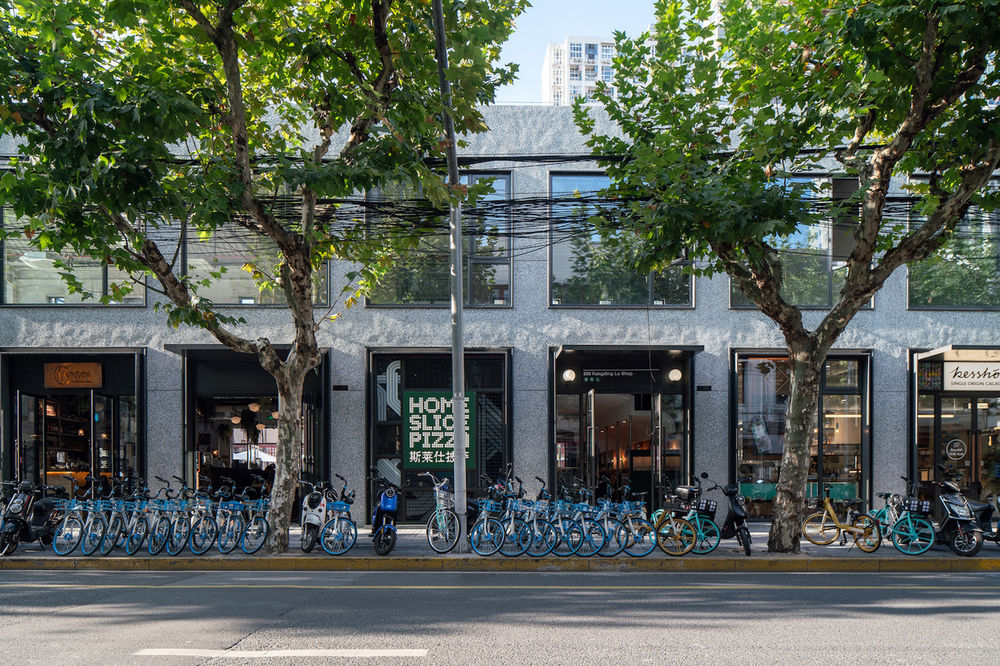
位于康定路的主入口比较狭窄,为了重塑和提升入口形象,我们将入口旁现有的坡屋顶建筑部分斜切拆除,将主入口拓宽为十米,打造成一个入口广场。此外,建筑面向广场的外立面选用了蒙德里安花纹的玻璃分割图案,其设计使建筑变得通透,人们从康定路与陕西北路的交叉口可以看到建筑内部的大厅,室内的活动透过玻璃展示到开放的街区。
▼改造动图,renovation gif © COLORFULL 昱景设计
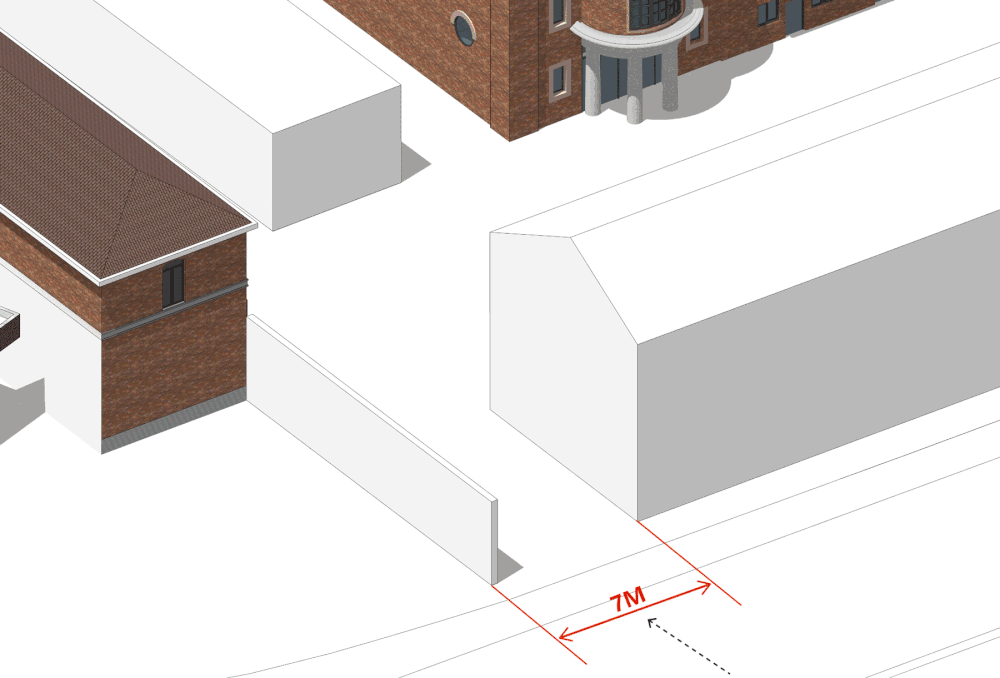
The main entrance at Kangding Road is quite narrow. In order to reshape and enhance the entrance, the existing sloping roof building next to the entrance has been partly removed, and the main entrance has been widened to ten meters to create an entrance plaza. In addition, a Mondrian glass partition pattern was used for the facade facing the square, the design of which makes the building permeable and allows people to see the interior lobby from the intersection of Kangding Road and North Shaanxi Road, with the interior activities being displayed through the glass into the open neighborhood.
▼主入口,main entrance © 润土 | 邵钟瑞
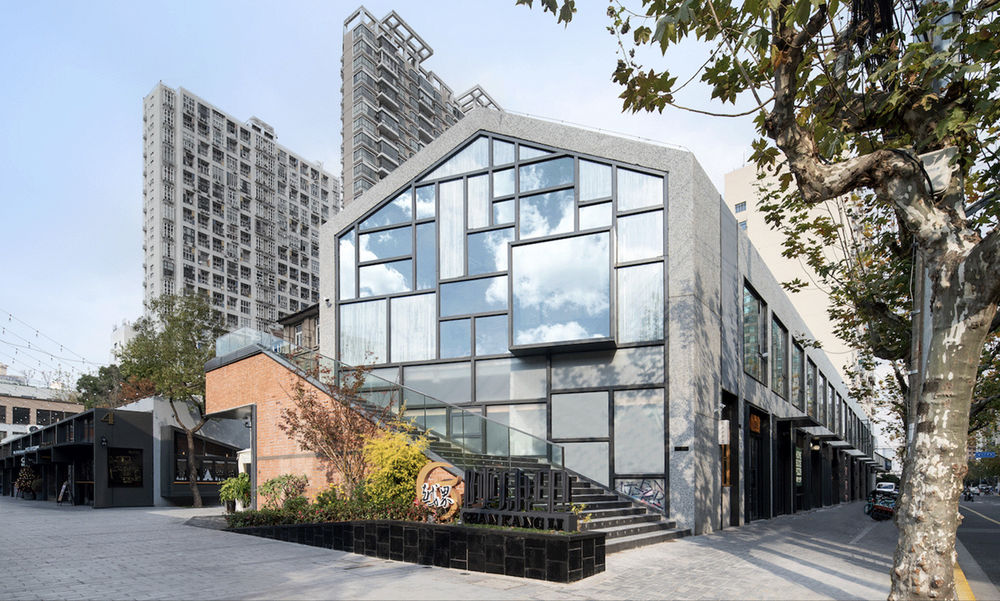
▼咖啡商业街,commercial street with its various cafes © 润土 | 邵钟瑞
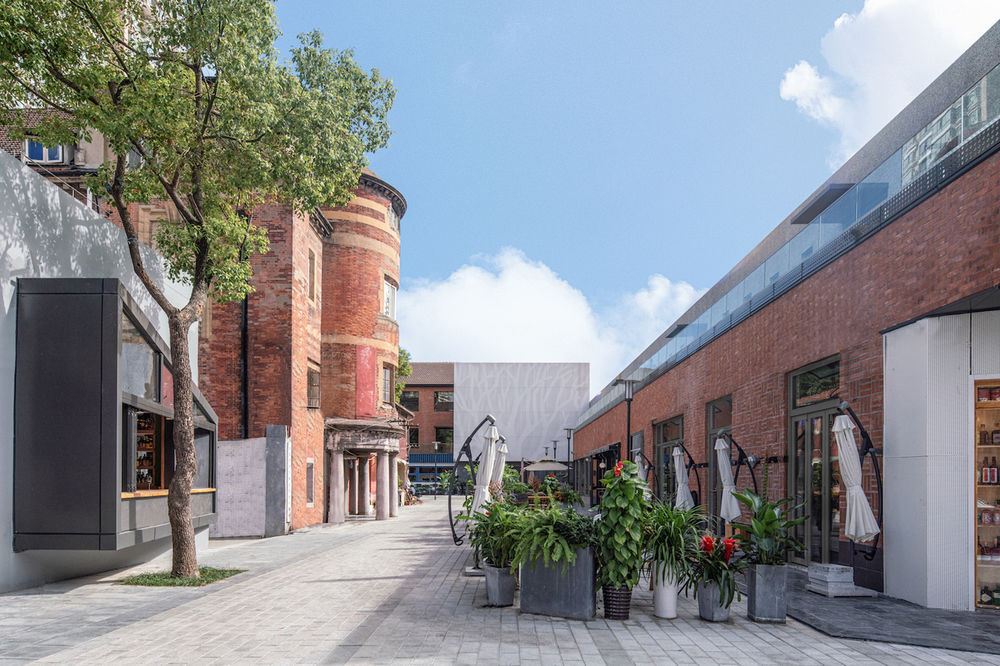
▼新旧材质对比,comparison of new and old materials © 润土 | 邵钟瑞
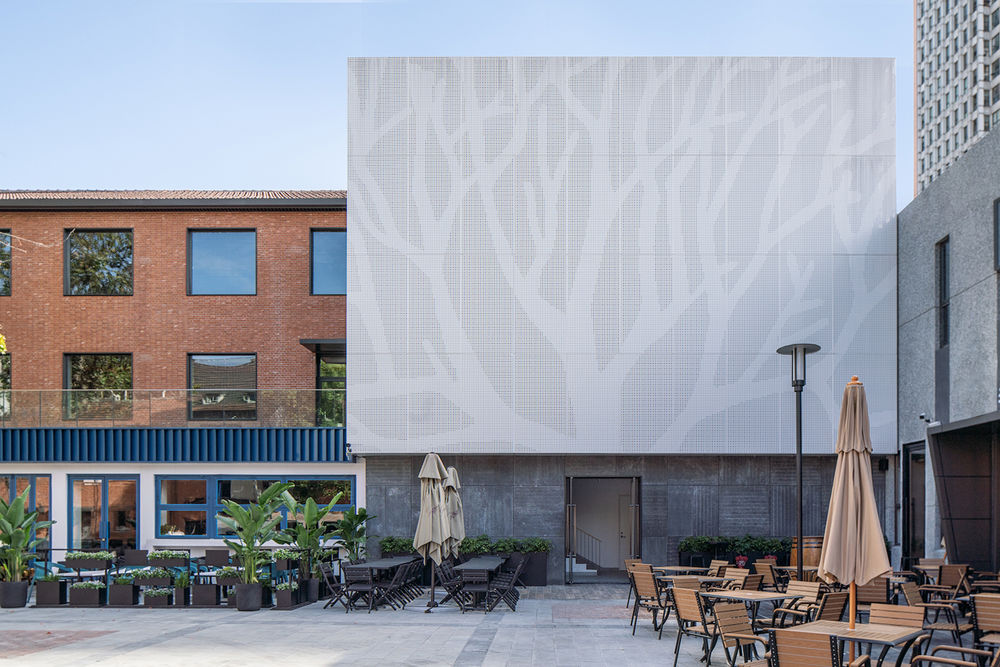
▼室外座椅区,exterior seating area © 润土 | 邵钟瑞
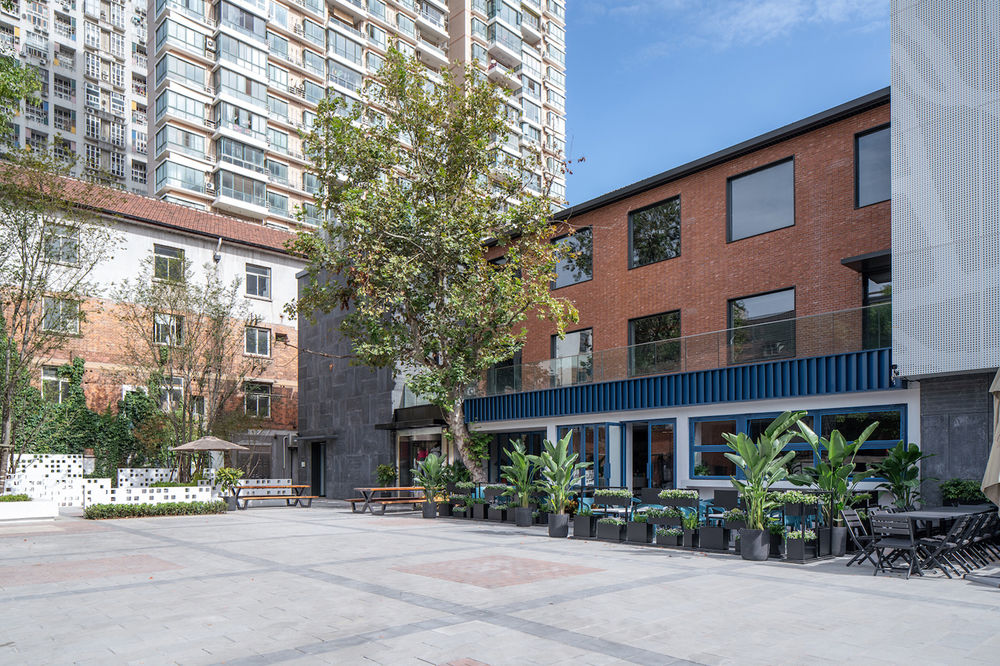
▼空心砖矮墙,low walls made of hollow bricks © 润土 | 邵钟瑞
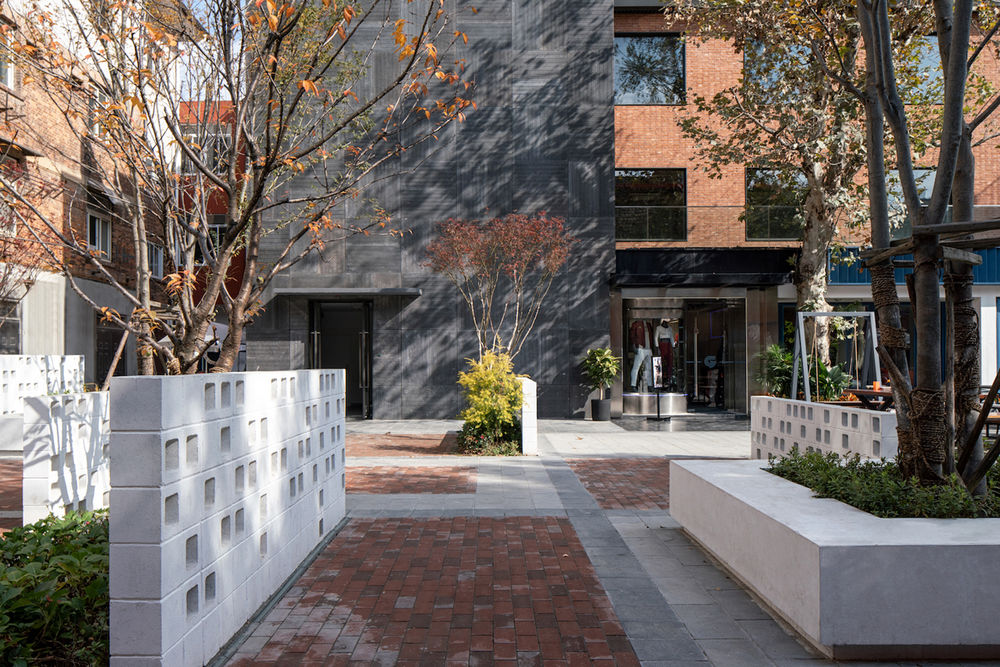
穿过开着各式咖啡的商业街继续往北,来到项目用地的中心,这里是白色基调的简约摩登风格。在这里,设计类公司的工作室聚集在一起,多元化、国际化的人群可以随时在此进行工作上的互动交流,发表自己的想法和创意。
Going north through the commercial street with its various cafes, people come to the center of the project site, where the minimalist and modern style in white prevails. This is where the studios of design companies come together and where a diverse and international group of people can interact with one another and share their ideas and creativity at any time.
▼从街道望向项目用地的中心,view from street to the center of the project site © 润土 | 邵钟瑞
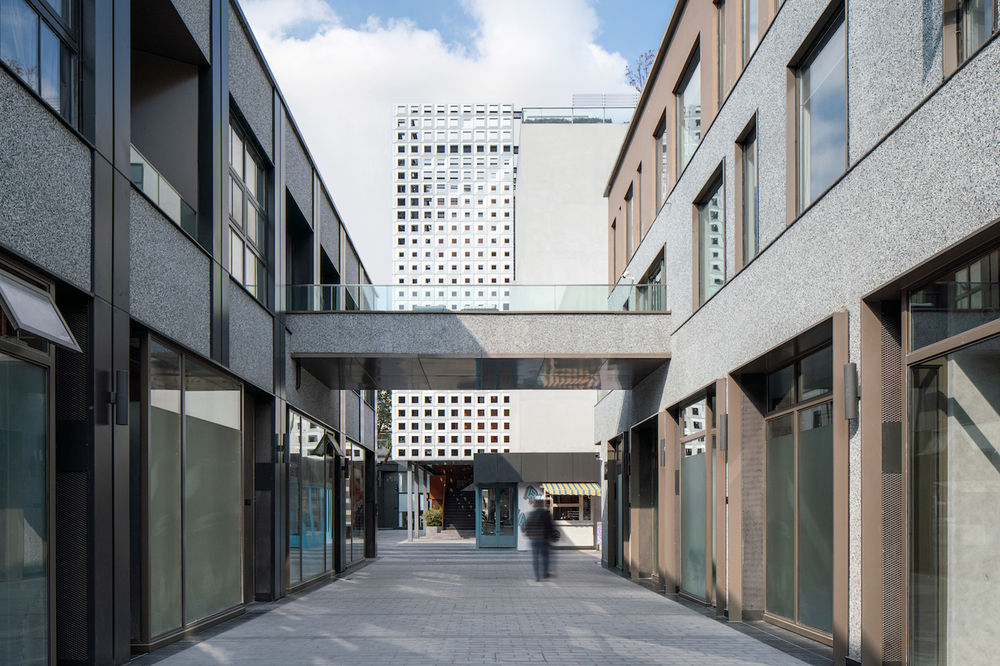
▼工作室大楼,studio building © 润土 | 邵钟瑞

▼白色基调的简约摩登风格,minimalist and modern style in white prevails © 润土 | 邵钟瑞

▼白色穿孔铝板细部,details of white perforated panels © 润土 | 邵钟瑞
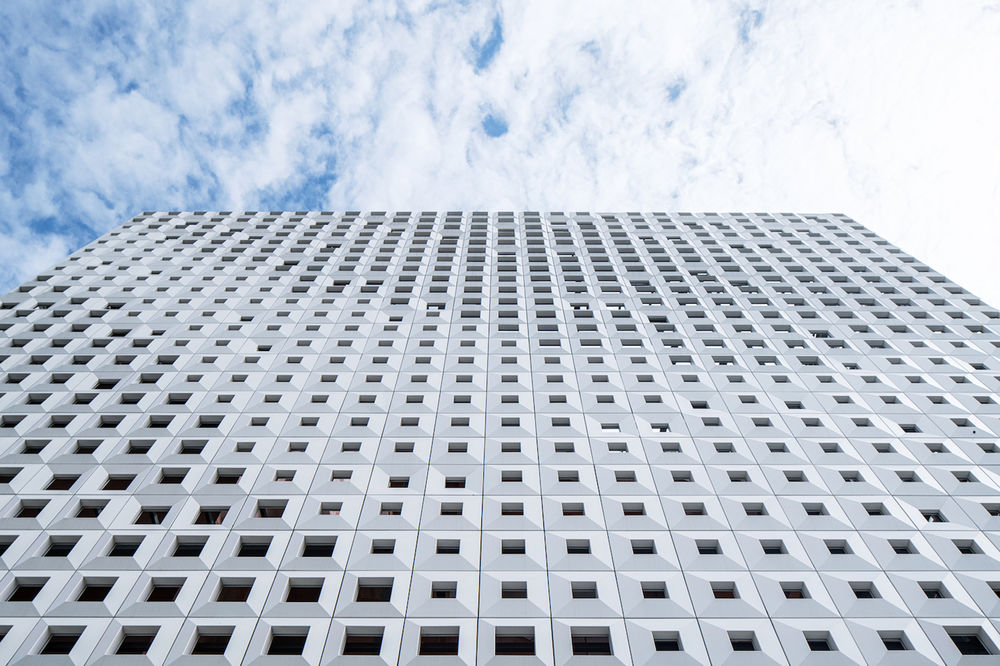
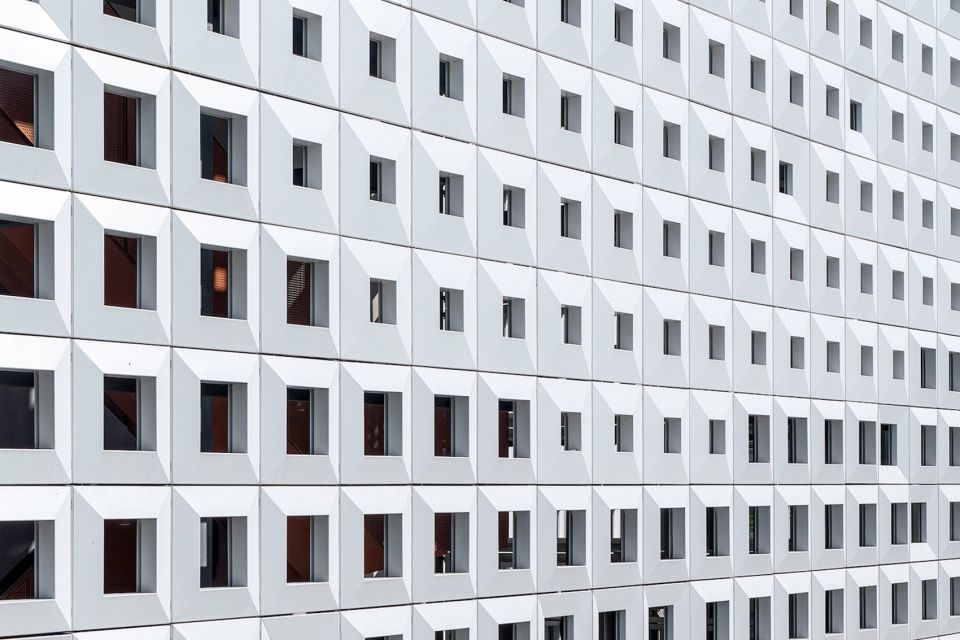
▼穿孔板内部,interior of the perforated panels © 润土 | 邵钟瑞
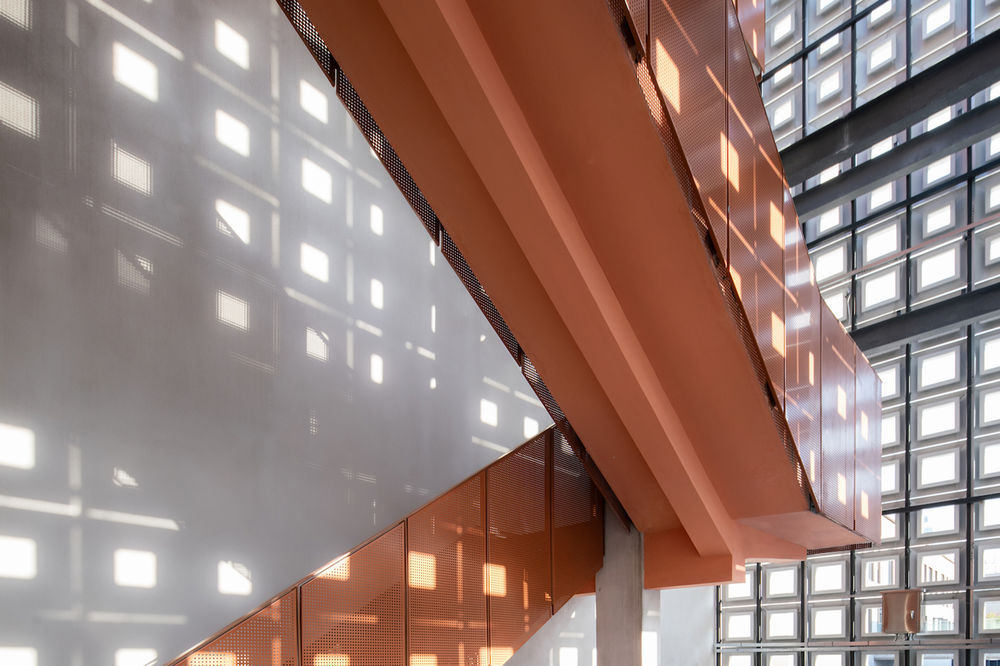
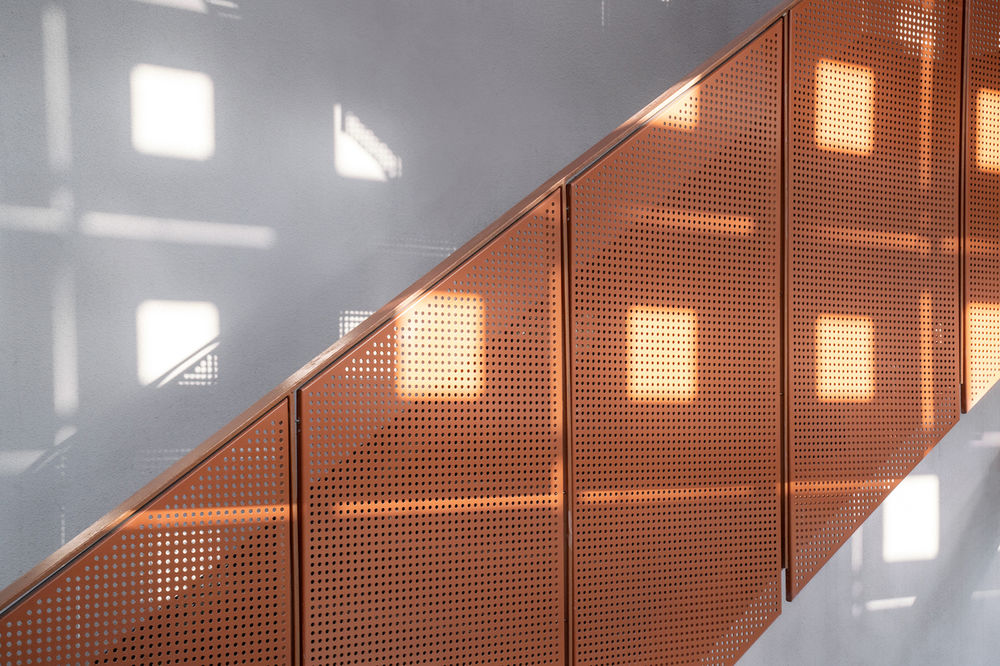
此外,陕西北路有另一个小入口,与沿街商铺相连而延伸至项目内部。入口处通过立面拱形连续开口与炭灰色砖块的结合,设计成与租界风格相协调的景观,从外部自然地吸引客流进入到项目之中。
In addition, there is another small entrance on North Shaanxi Road, which is connected to the shops along the street and extends into the inside. The entrance is designed to harmonize with the tenement style through a combination of continuous arched openings in the facade and charcoal grey brickwork, which naturally draws traffic into the inside.
▼次入口,second entrance © 润土 | 邵钟瑞
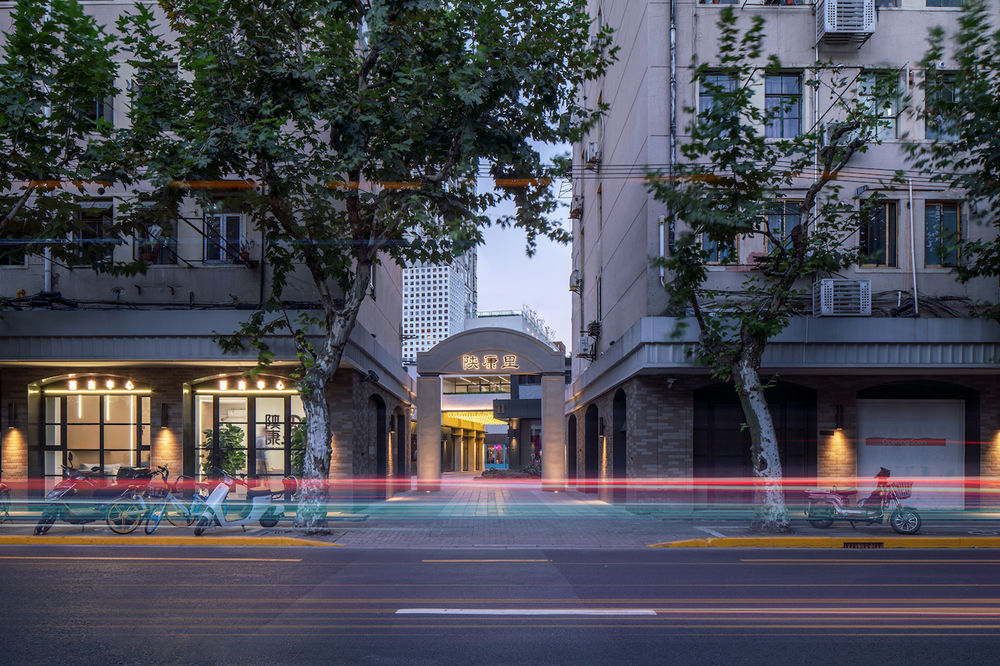
▼次入口广场,second entrance plaza © 润土 | 邵钟瑞
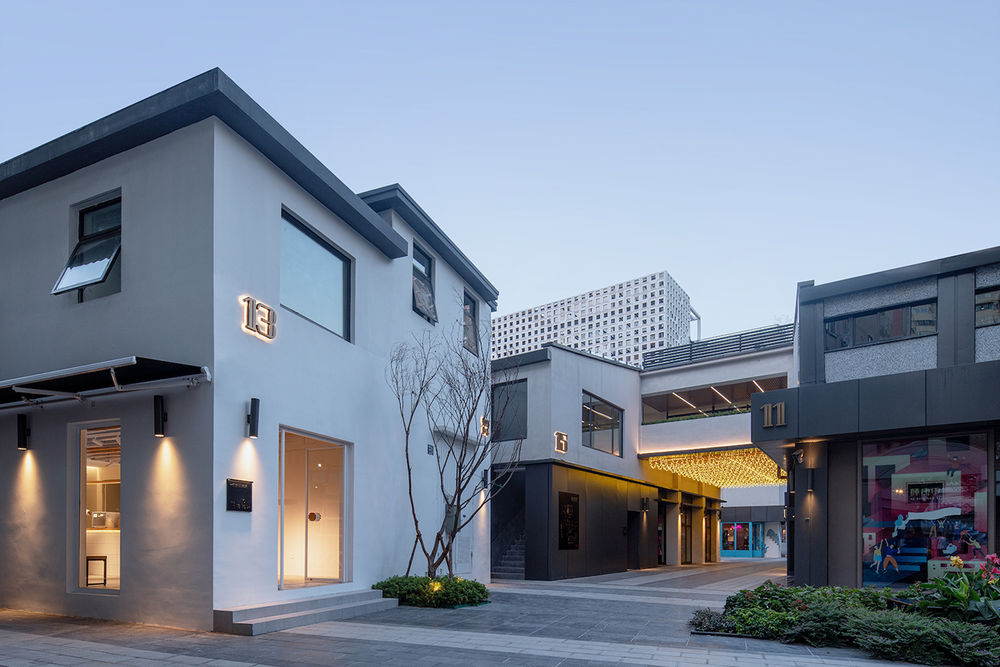
▼夜晚灯光效果,lighting by night © 润土 | 邵钟瑞
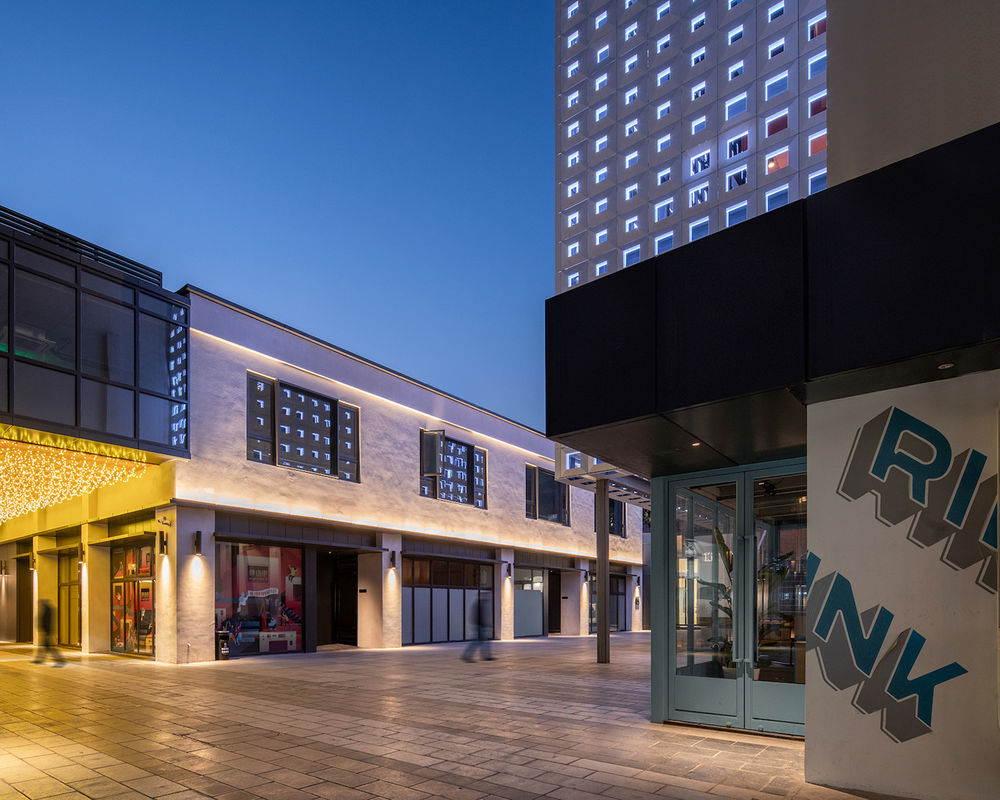
由此,我们希望将项目打造成租界区域的新型创意园区所应有的形象,尽可能保留其历史风情,又在此基础上彰显个性。我们认为,现今的开发趋势并非拆除重建,而是将现有的建筑改造再利用,将优秀历史建筑的美一直传承下去。我们期望这个项目能够成为上海的新地标,同时也是未来更多能够将人、空间、历史相融合的项目的开发指标。
We hope to make a new creative park in the former Concession area, retaining as much of its historic style as possible, but with a distinctive character. We believe that the current trend in development is not to demolish and rebuild, but to reuse existing buildings in an adaptive manner, and to perpetuate the beauty of historical buildings. We expect this project to become a new landmark in Shanghai, and an indicator of more future developments that integrate people, space and history.
▼平面图,site plan © COLORFULL 昱景设计
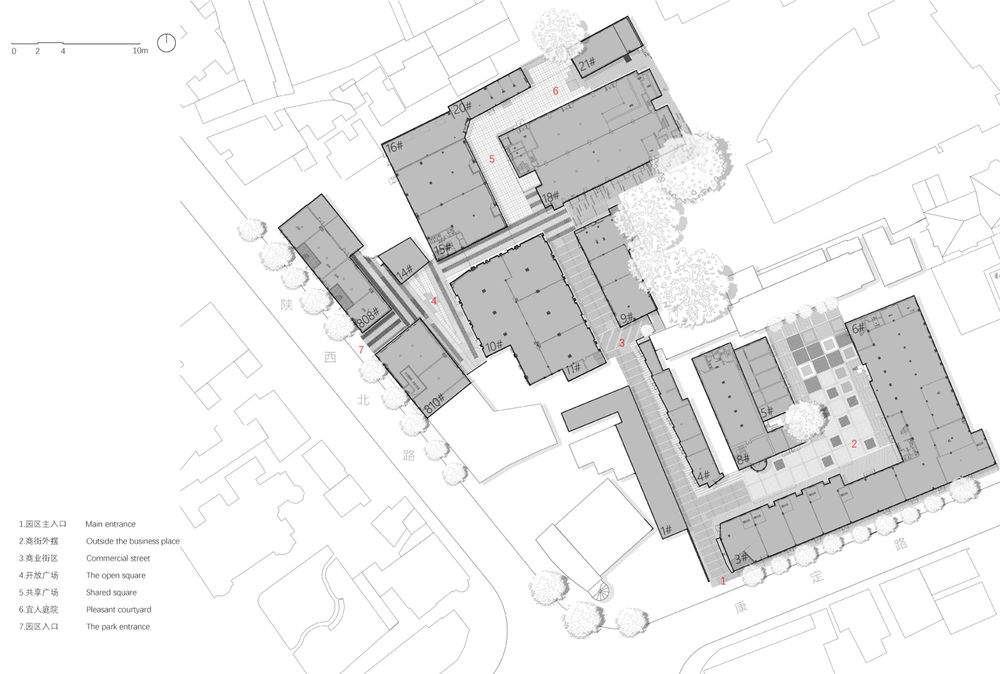
▼南立面,south elevation © COLORFULL 昱景设计

▼西立面,west elevation © COLORFULL 昱景设计



